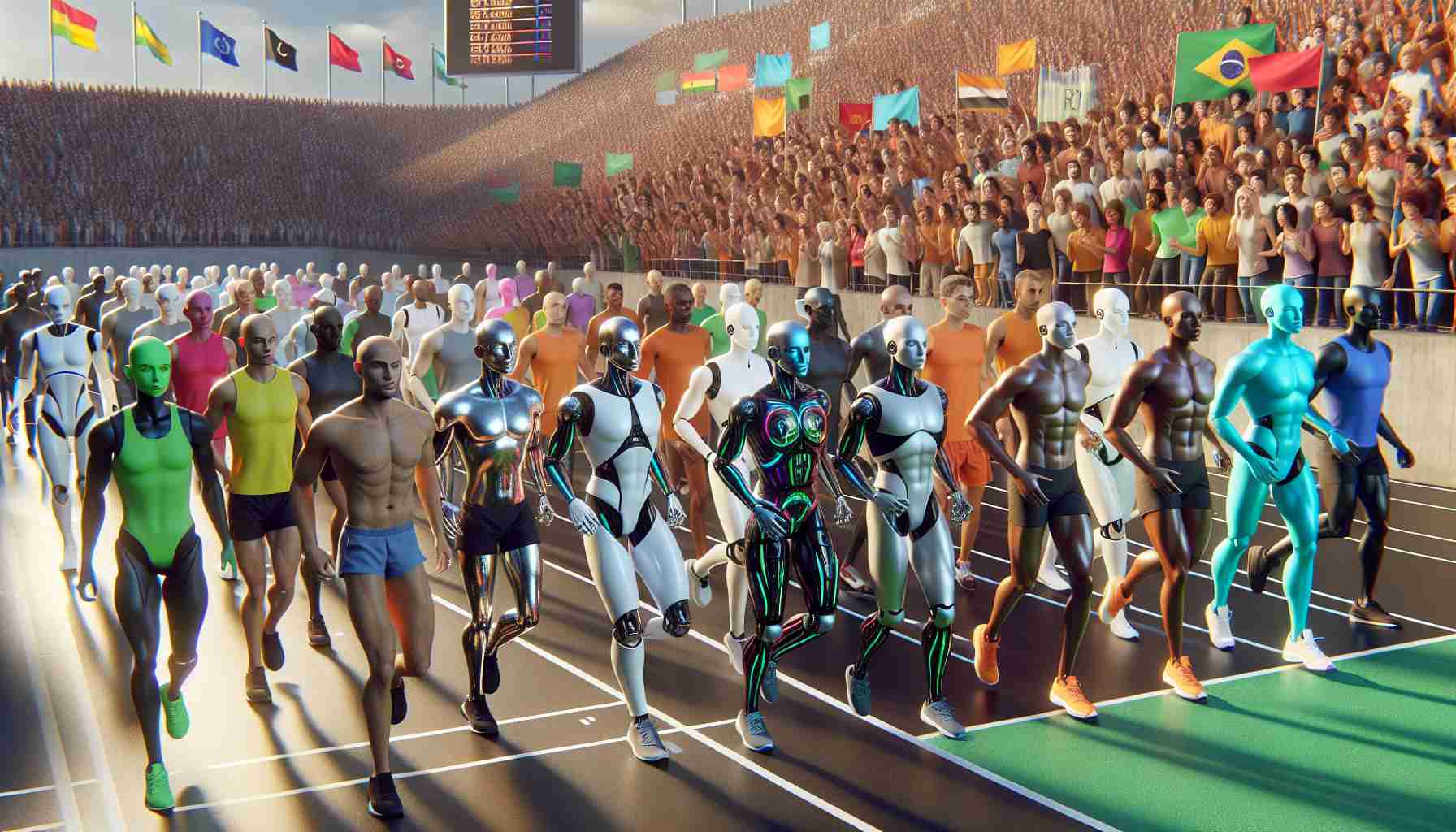Historic race in Beijing combines human athletes and robot runners!
In an unprecedented event, China is set to launch the world’s first marathon featuring both human and humanoid competitors. Scheduled for April in Beijing’s Daxing district, this half-marathon race (21 km) is anticipated to attract around 12,000 human participants alongside a fleet of competing robots. Prizes will be awarded to the top three finishers, regardless of their nature.
According to the Beijing Economic-Technological Development Area, also known as E-Town, the robots must resemble humans and possess a mechanical framework that enables activities like bipedal walking or running, rather than relying on wheels. The competition will see robots ranging in height from 0.5 to 2 meters and must meet specific design criteria for participation.
Both remotely operated and fully autonomous machines can join the race, with allowances for battery swaps during the event. Among the entrants is “Tiangong,” a cutting-edge humanoid robot developed by China’s Embodied Artificial Intelligence Robotics Innovation Center. Tiangong has previously made headlines by successfully completing a race at the Yizhuang Half Marathon, clocking an impressive 10 kilometers per hour.
This innovative marathon promises not only to test the limits of technology but also to symbolize a unique blend of human ingenuity and robotic prowess in a competitive environment.
Reimagining the Race: Humanity and Technology in Competition
The upcoming half-marathon in Beijing stands as a pivotal moment—not just in the realm of sports but in the broader dialogue surrounding human-robot interactions. With the integration of humanoid competitors into a traditionally human domain, this event challenges our preconceived notions of athleticism and raises profound questions about the future of competition itself.
As we edge towards a world where robots increasingly occupy roles once held exclusively by humans, this marathon serves as a microcosm of our evolving relationship with technology. It signals a societal shift, suggesting collaborative coexistence between humans and machines rather than adversarial opposition. This change could redefine cultural narratives around achievement and success, blurring the lines of competition and cooperation.
Additionally, the environmental implications of robotic advancements are noteworthy. As robotic technology potentially streamlines processes across industries—from manufacturing to logistics—there may be significant reductions in carbon footprints. However, we must also consider the sustainability of the materials used in building these robots, as mass production could bring its own environmental challenges.
Looking ahead, trends in robotic enhancement of human capabilities may transform not only athletic competitions but also everyday tasks, catalyzing a future where robots support rather than replace human efforts. The long-term significance of this event lies in its capacity to inspire a culture that embraces innovation while acknowledging the ethical responsibilities that accompany such breakthroughs. In exploring the synergy between human runners and their robotic counterparts, we may well be laying the foundation for future collaborations that redefine what it means to compete.
Beijing’s Pioneering Human-Robot Marathon: What to Expect and How It Will Shape the Future
Overview
In an extraordinary showcase of technology and athleticism, Beijing is set to host the world’s first marathon featuring both human and humanoid competitors. Scheduled for April 2024 in the Daxing district, this unique half-marathon (21 km) is drawing attention from around the globe, blending the worlds of athletics and robotics. This event marks a significant innovation in competitive racing, presenting a myriad of opportunities and challenges for participants and organizers alike.
Key Features of the Event
– Hybrid Competitors: The marathon will feature approximately 12,000 human runners alongside humanoid robots designed to compete in foot races.
– Robotic Design Requirements: Robots must resemble humans and should be capable of bipedal movement, eliminating the use of wheeled mechanisms. Height specifications range from 0.5 to 2 meters, ensuring a diverse array of competitors.
– Entry of Advanced Robots: Notable entries include “Tiangong,” a state-of-the-art humanoid robot from China’s Embodied Artificial Intelligence Robotics Innovation Center. Tiangong made headlines for completing a race at the Yizhuang Half Marathon with a top speed of 10 kilometers per hour.
Pros and Cons
Pros:
– Technological Advancement: This event represents a significant leap towards integrating robotics into various fields, demonstrating how advanced technology can compete alongside humans.
– Enhanced Public Interest: The unique format is likely to generate significant media coverage and public engagement, promoting interest in both robotics and athletics.
Cons:
– Fairness in Competition: Concerns may arise regarding the fairness of races between humans and machines, questioning the integrity of both competitive categories.
– Safety Considerations: The participation of robots introduces new safety dynamics for both human competitors and spectators.
Trends and Innovations
– Integration of AI in Sports: This marathon symbolizes a broader trend where AI and robotics are increasingly becoming integral parts of sports, potentially influencing training techniques and athlete performance.
– Public Perception of Robotics: Events like this can help reshape public perception, moving from fear and skepticism towards a more integrated view of technology in mixed arenas.
Use Cases
– Robotics Testing and Development: The marathon serves as a real-world testing ground for engineers and developers working on humanoid robotics, allowing them to refine their designs based on performance metrics.
Market Analysis
The intersection of sports and robotics represents a burgeoning market, as technology firms and athletic organizations explore collaborations that enhance competitive experiences. The success of this event could pave the way for future hybrid races globally, potentially leading to a new genre of competitions that attract a diverse audience.
Looking Ahead: Predictions
As technology continues to evolve, future events may see even more advanced robots competing against elite athletes, expanding the scope of both sports and robotic capabilities. This marathon could set a precedent, leading to innovations in training, health monitoring, and robotic design specifically tailored for competitive sports.
Conclusion
The April marathon in Beijing not only exemplifies a remarkable convergence of human effort and technological advancement but also poses pivotal questions about the future of competitive sports. By bridging the gap between athletes and artificial entities, this historic event is poised to inspire a new wave of innovation and collaboration in the realms of athletics and robotics.
For more information on robotics and upcoming events, visit China Daily.












